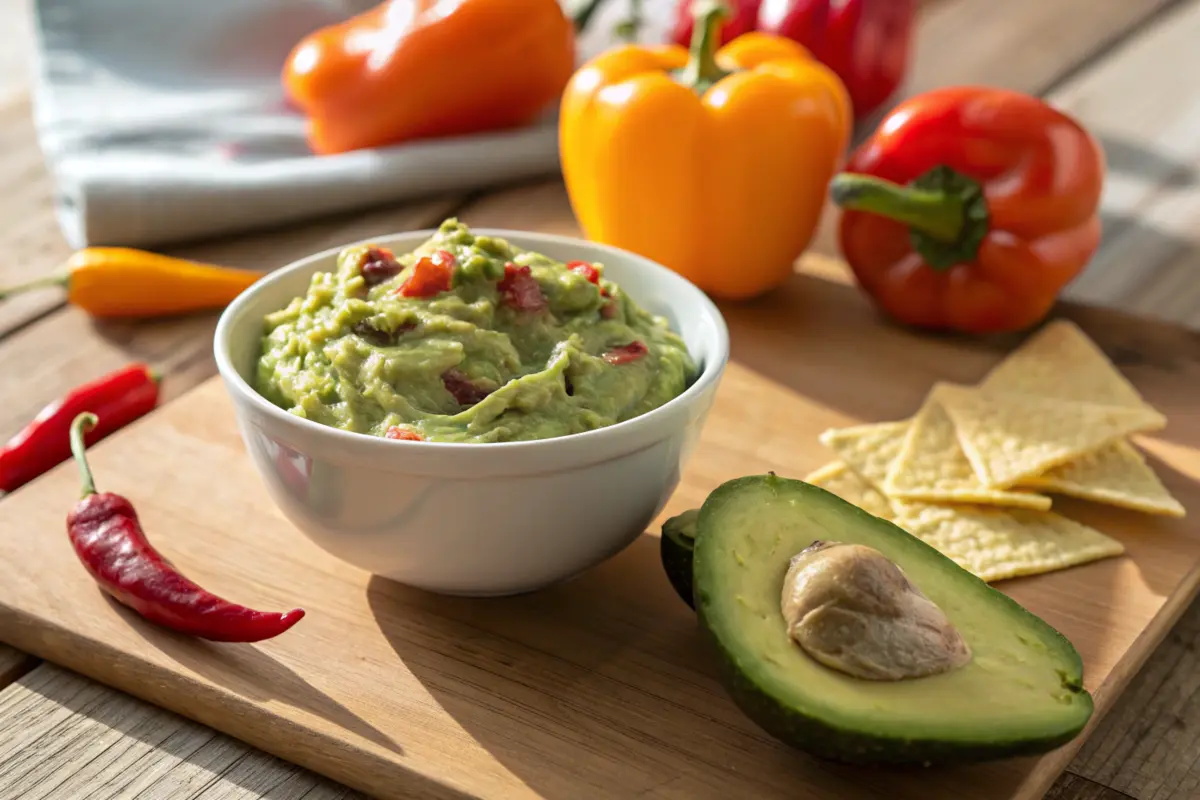Imagine a heaping bowl of guacamole that’s smooth, creamy, and rich in flavor. Now, picture that same vibrant green dip without the jalapeños—yet somehow still just as lively and inviting. Perhaps you’re sensitive to spicy peppers, or maybe you just can’t find fresh jalapeños at your local market. Fear not, since plenty of zesty, flavorful alternatives exist! In this guide, we’ll dig deep into what makes a good substitute for jalapeños in guacamole, explore top pepper picks, compare their flavor profiles, and share tips on maintaining the perfect balance of taste and texture. Let’s get started.
Understanding the Role of Jalapeños in Guacamole
What is a good substitute for jalapeños in guacamole? – The Importance of Heat in Avocado Dips
Jalapeños bring a mild-to-moderate kick and a fresh vegetal quality. They’re not just about spice—these chili peppers balance the creaminess of avocados, the tanginess of lime, and the subtle sweetness of onions and cilantro. Without jalapeños, guacamole can feel bland or flat. That’s why finding a solid substitute for jalapeño peppers in guacamole is so crucial for preserving that signature zing.
Flavor Profile of Jalapeños and Their Influence on Guacamole
Jalapeños are often chosen for their medium-level heat, distinct grassy undertones, and natural brightness. When finely diced and folded into mashed avocados, they bring structure and spark. They help offset the richness of the avocado, ensuring your guacamole doesn’t taste one-dimensional. Because jalapeños can range from mild to moderately spicy, they appeal to many palates—enough heat to excite but rarely so fiery as to overwhelm. Replacing them means replicating these characteristics: a hint of spice, fresh flavors, and a pleasing texture that integrates seamlessly with the creamy avocado base.
Texture and Color Impact on the Guacamole
Jalapeños also add a subtle crunch that enhances mouthfeel. Their vibrant green hue meshes beautifully with the avocado’s color, contributing visual appeal. While your guacamole won’t suddenly flop without them, substituting properly will ensure you maintain that desired crispness and balanced color scheme. By choosing a replacement pepper with a similar texture and equally vivid hue—like serrano peppers or poblano peppers—you can ensure that your bowl of guacamole looks as gorgeous as it tastes.
Health and Nutritional Considerations
Jalapeños contain vitamins, minerals, and beneficial phytochemicals. They’re low in calories and pack a nutritional punch that complements the healthy fats in avocado. If you’re looking to replace jalapeños, it’s worth choosing other peppers or ingredients that offer nutrients and flavor. Consider mild peppers that provide vitamins A and C or other add-ins like crunchy vegetables with fiber, all working in tandem to keep guacamole both delicious and nutritious. For guidance, check out nutritional guidance from reliable health authorities and learn how varying produce can boost the nutritional profile of your favorite dips.
Popular Pepper Substitutes and Their Flavor Profiles
What is a good substitute for jalapeños in guacamole? – Exploring Other Pepper Options
When jalapeños are off the table, consider other chili pepper varieties with distinct flavors and varying spice levels. After all, fresh chili alternatives can range from gently warming to fiery hot. Whether you favor something with a milder profile or a pepper that goes toe-to-toe with jalapeños, there’s plenty to choose from. The key is understanding each candidate’s flavor, aroma, and intensity before mixing it into your avocado-based dip. By doing so, you’ll ensure that your guacamole recipes remain bold, bright, and completely irresistible.
Serrano Peppers – Crisp, Bold, and Slightly Hotter
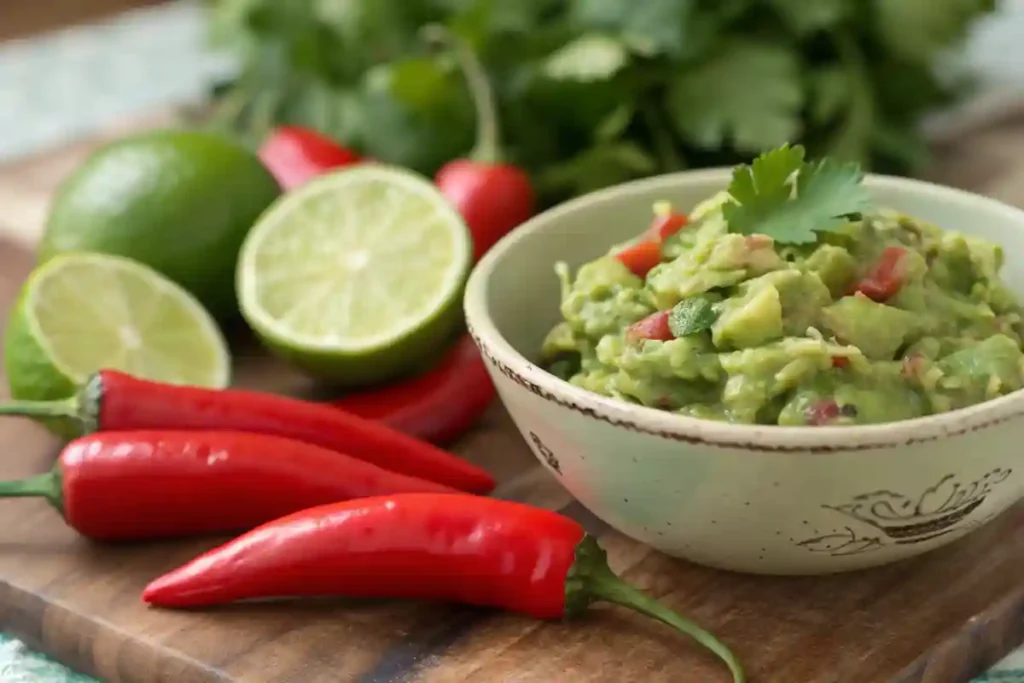
If you’re itching for a bit more punch, serrano peppers fit the bill. They’re similar to jalapeños but often a notch hotter. Serranos sport a crisp bite, a vivid green hue, and a fresh flavor that easily complements the buttery richness of avocados. When diced finely and folded into guacamole, they offer a brightness and complexity that jazzes up the whole bowl. Yet, they’re not too extreme in heat, especially if you remove seeds and membranes. If you’re curious about the heat spectrum of different peppers, learn more about comparing chili flavors at chili pepper varieties, where you’ll discover handy insights.
Poblano Peppers – Mild, Earthy, and Subtly Sweet
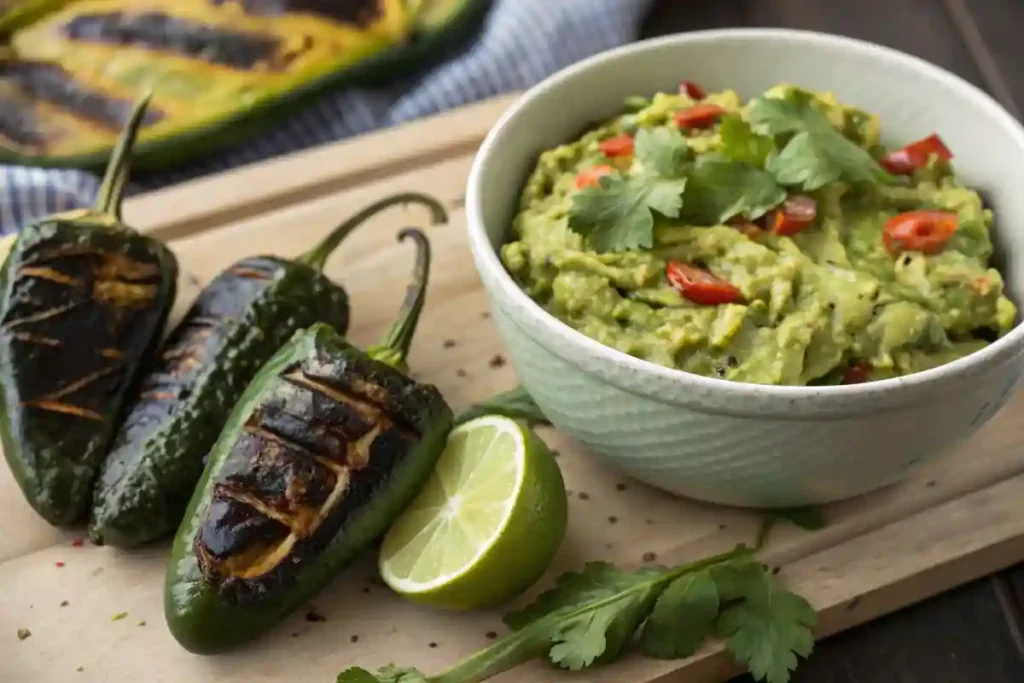
Poblanos deliver a gentle, mellow sensation that appeals to those who prefer a mild spice level. With a deeper, earthier character, these dark green peppers are ideal if you want a whisper of smokiness rather than a firestorm. They’re mild enough for sensitive palates, plus their large, fleshy walls add a wonderful texture. Roasting poblanos intensifies their flavor, turning them richer and sweeter—fantastic for complex guacamole twists. Toss chopped roasted poblano into your dip, and suddenly, you’ve got a lush, layered flavor profile that stands proudly on its own. This swap suits anyone who finds jalapeños too intimidating but still craves a depth of flavor.
Anaheim Chilies – Gentle Flavor with a Fresh, Green Taste
Looking for something even milder? Anaheim chilies offer a soft, subtle tang. They provide a bright, slightly vegetal flavor that enhances guacamole variations without scorching your taste buds. Since their heat level hovers on the lower end, you can add more generous portions. This ensures that the finished product still feels exciting, vibrant, and layered. For best results, use them fresh and finely diced. Mix them in carefully, taste as you go, and adjust the seasoning until you’ve hit the sweet spot.
Jalapeño-Like Alternatives – Fresnos and Green Chilies
For those who like the flavor of jalapeños but seek a unique twist, Fresnos and green chilies can offer that familiar zing. Fresnos have a fruity sweetness combined with moderate heat, making them a near-perfect stand-in. They lend a liveliness that keeps your guacamole spirited. Likewise, chopped green chilies—often sold canned and mild—bring a gentle brightness that creates a balanced bowl of dip. Be sure to integrate them slowly, stirring between additions to maintain the dip’s consistency. By understanding how each pepper variety behaves, you’ll know exactly what is a good substitute for jalapeños in guacamole and never miss a beat.
Non-Pepper Substitutes, Additional Seasonings, and Spicing Techniques
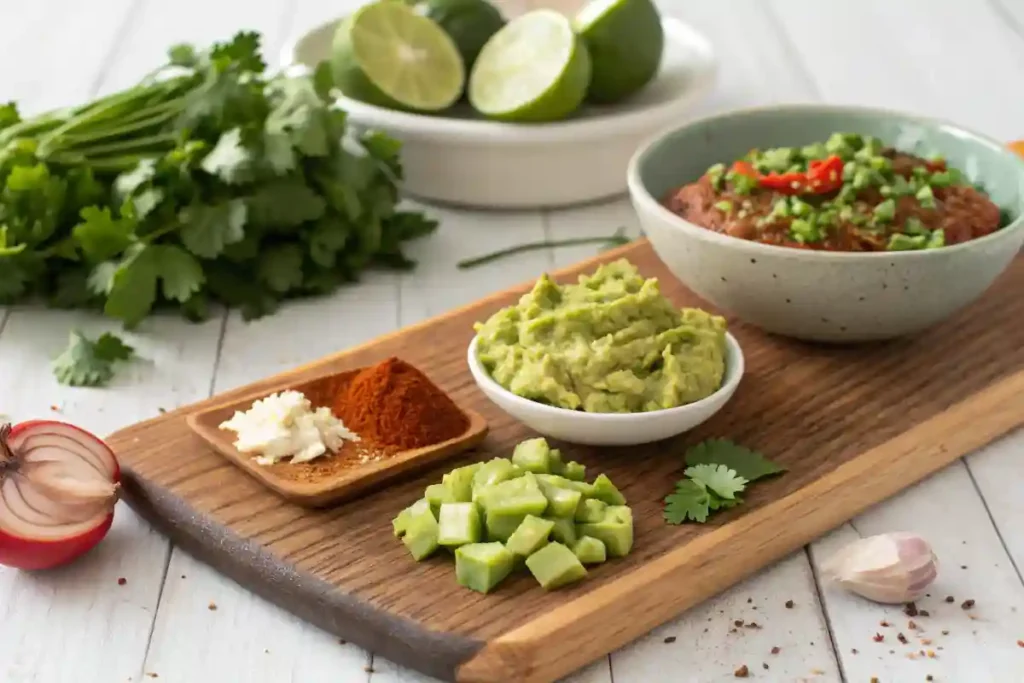
What is a good substitute for jalapeños in guacamole? – Embracing Seasonings Beyond Fresh Peppers
Sometimes you crave that spicy kick, but you’d rather not rely on fresh peppers. Happily, you can still achieve a layered, dynamic guacamole with mild spice options and savory add-ins that don’t rely solely on chilies. Instead of green peppers, why not incorporate fragrant seasonings, tangy accents, or herbaceous flavors? By exploring fresh chili alternatives in dried or powdered forms, you’ll discover that maintaining a balanced heat level is easier than you think. This way, your avocado-based dip can still boast warmth, zest, and complexity—just without the jalapeño itself.
Dried and Ground Peppers – Chili Powder, Ancho, and Chipotle
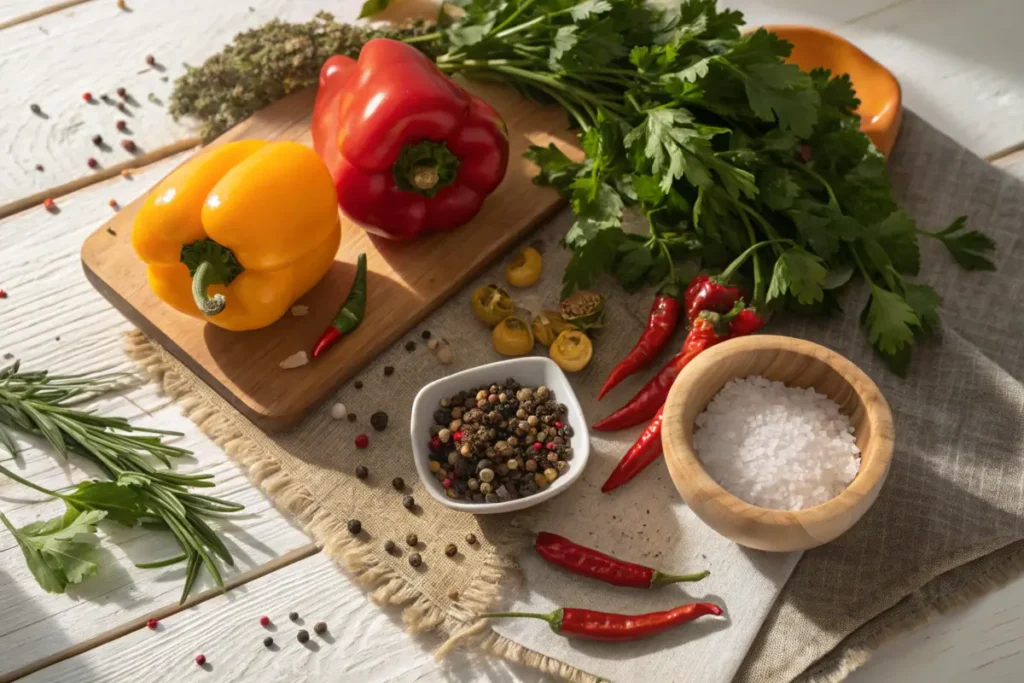
If fresh peppers are scarce, consider dried counterparts. Chili powder blends can deliver gentle warmth while introducing subtle smokiness. Ancho chili powder, derived from dried poblano peppers, gives a mild sweetness that rounds out the avocado’s creaminess. Meanwhile, a pinch of chipotle powder adds a smoldering, earthy dimension that feels full-bodied yet not overwhelming. Mix these seasonings gradually, tasting frequently as you go. A scant half-teaspoon can transform your guacamole from flat to fabulous! For more guidance on nailing the right proportions, consult kitchen-tested cooking tips, where culinary experts share advice on adjusting seasoning levels to fit your personal palate.
Red Pepper Flakes and Crushed Dried Chilies – A Simple Heat Boost
For those who prefer a no-frills approach, a sprinkle of red pepper flakes delivers quick, adjustable heat. Since these flakes are easy to measure, you’re less likely to overdo it. Start small—a few flakes at a time—and stir thoroughly. Crushed dried chilies, whether ancho, guajillo, or cayenne, can add complexity without overshadowing the avocado’s delicate flavor. Unlike fresh peppers, these dry options concentrate their flavors, so a pinch truly goes a long way. If you’re concerned about texture, sift them into the dip at the end to ensure even distribution and avoid spicy clumps.
Tangy and Flavorful Add-Ins – Tomatillos, Cilantro, and Garlic
Heat isn’t the only route to excitement. Add chopped tomatillos for a tangy twist that brightens the entire dish. These green beauties introduce a tart acidity that stands in for some of the jalapeño’s zing. Meanwhile, generous handfuls of fresh cilantro and a finely minced clove of garlic infuse savory depth. Cilantro’s herbaceous aroma and garlic’s gentle pungency can replace some lost heat intensity with rich, aromatic complexity. Mixing these elements thoughtfully ensures that even if you skip chilies altogether, your guacamole still sings with character.
Balancing Salt, Acid, and Texture – A Harmonious Blend
Adjusting salt and acid levels can also help mimic the lively flavor jalapeños provide. Season with fine sea salt, lime juice, or even a hint of lemon juice. Extra acidity sharpens flavors, making the dip feel bolder and more vivid. For texture, fold in diced onion or crunchy vegetables like jicama. By carefully tweaking these essential building blocks, you’ll discover what is a good substitute for jalapeños in guacamole—a strategy focusing on depth, dimension, and personality rather than one specific fiery ingredient.
Tailoring Your Choice of Jalapeño Substitute to Preferences and Occasions
What is a good substitute for jalapeños in guacamole? – Matching Spice Levels to Palates
It’s essential to remember that not everyone has the same tolerance for spiciness. Some prefer a gentle tickle on the tongue, while others delight in a full-blown chili party. By recognizing your guests’ comfort zones, you can fine-tune what is a good substitute for jalapeños in guacamole to suit their taste. If you’re serving a crowd, consider splitting your avocado-based dip into multiple bowls—one with a mild chili pepper variety and another featuring more robust heat. This thoughtful approach ensures everyone savors a bowl that’s both pleasurable and balanced, no matter where they land on the spice-loving spectrum.
Considering the Guacamole’s Texture and Style
Chunky guacamole or silky-smooth mash? The texture you seek influences your substitute choice. Softer peppers, like roasted poblano or mild green chilies, melt into creamy avocado, adding gentle warmth without jarring bites. Meanwhile, crisp, fresh peppers—like serranos—lend a snappy crunch that energizes the dip. Experimentation is key: try small batches, mixing and matching until you strike that sweet spot. Tailor the consistency and complexity of your guacamole’s mouthfeel to your personal preference, ensuring that each spoonful tickles your taste buds and complements the avocado’s lush creaminess.
Balancing Complementary Flavors and Culinary Themes
Because guacamole often stars in Southwestern cuisine and Tex-Mex flavors, consider aligning your substitute choice with the meal you’re preparing. Mild Anaheim chilies pair nicely with lighter fare, such as fresh fish tacos or crisp salads. If you’re prepping a hearty, flavor-packed spread—think grilled veggies, smoky beans, or warm tortillas—a slightly spicier option like serranos can heighten the experience. Alternatively, dried seasonings like chipotle powder work well if you’re leaning into a deeper, richer flavor profile. Whether you’re hosting a fancy dinner or a casual weekend gathering, your chosen spicy green pepper substitute should complement the overall vibe and culinary direction.
Seasonal and Local Availability
Sometimes the best substitute is simply what’s freshest at the market. Seasonal peppers can bring an element of surprise and renewed energy to your guacamole. Visit your local farmers’ market, where you might discover colorful, unique pepper varieties that fit the mild spice level you crave. Ask vendors for recommendations, and don’t be shy about sampling. After all, relying on fresh produce ensures you’re getting top-notch flavor and quality. Adapting to what’s abundant in your area can inspire creative, vegetable-based dips that taste genuinely special.
Tailored Tips for Different Dietary Needs
For diners who must avoid certain ingredients or watch their sodium intake, thoughtful substitutes shine. By choosing peppers with lower heat, you can add more citrus or fresh herbs instead of relying on heavy salt. Incorporate tomatillos for a tangy twist, toss in cilantro for brightness, or sprinkle in a pinch of dried chili flakes sparingly to control intensity. If you’re entertaining guests who avoid nightshades, try substituting minced radish or even finely chopped cucumber for a crisp, cooling bite. Experimentation remains your greatest ally. With a bit of trial and error, you’ll discover what is a good substitute for jalapeños in guacamole that respects dietary needs while preserving that signature flair every good guac deserves.
Practical Tips for Incorporating Your Chosen Substitute into Guacamole
What is a good substitute for jalapeños in guacamole? – Step-by-Step Preparation
Knowing what is a good substitute for jalapeños in guacamole is only half the battle. The real charm lies in folding that ingredient seamlessly into your homemade guacamole, preserving balance, and capturing that signature savory richness. Start by mashing ripe avocados until creamy, then gradually add your chosen mild peppers or flavor-boosting seasonings. With each addition, taste and adjust until you hit that perfect equilibrium. Remember to go slow—too much heat or a sudden jolt of acidity can overshadow the avocado’s delicate qualities. Take your time, trust your instincts, and watch your guacamole recipes transform into something personal and profoundly delicious.
Controlling Heat and Boldness with Simple Adjustments
If your substitute brings surprising intensity, dial back by adding more mashed avocado, a drizzle of lime juice, or a pinch of salt. Conversely, if you’d like more oomph, sprinkle in a bit more of your dried chilies or finely dice a tad more serrano pepper. Maintaining control over intensity is easier than you think—just taste frequently and trust your palate. For more flavor inspiration and techniques, check out kitchen-tested cooking tips to help you fine-tune seasoning until your avocado-based dip feels perfectly in sync with your personal preferences.
Serving Suggestions, Pairings, and Garnishes
Once you’ve mastered your chosen substitute, consider how your finished guacamole fits into the spread. Serve it alongside warm corn tortillas, crunchy vegetable crudités, or sprinkled atop a vibrant taco salad. Garnish with fresh cilantro leaves, a sprinkle of cotija cheese if dietary preferences allow, or a dusting of chili powder for a pop of color and complexity. The right finishing touches tie everything together, elevating the experience. With a custom blend of flavors and textures, your guacamole—crafted without jalapeños—will stand tall among the tastiest dips out there, confidently showcasing what is a good substitute for jalapeños in guacamole.
Frequently Asked Questions – What is a good substitute for jalapeños in guacamole?
FAQs – Addressing Common Questions About Substitutes for Jalapeños
Curious about more details on what is a good substitute for jalapeños in guacamole? You’re not alone! Below are some commonly asked questions sourced from those who want to preserve flavor, maintain heat levels, and ensure their guacamole stays as scrumptious as ever, even without traditional jalapeños.
Can I Use Bell Peppers Instead of Jalapeños in Guacamole?
Yes, bell peppers bring sweetness, crisp texture, and gentle flavor. Although they lack the spicy kick, their mildness may appeal to sensitive palates. By mixing in a dash of chili powder or a sprinkling of red pepper flakes, you can reclaim some heat while keeping the dip’s smooth balance.
What Pepper Is Closest in Flavor to Jalapeños?
Serrano peppers often come closest to mirroring jalapeños, offering a crisp, clean burn and a fresh, green flavor. They’re slightly hotter, so start small when adding them. If serranos aren’t available, Fresnos also work well, delivering a moderately spicy, fruity taste that complements creamy avocado and the zest of lime beautifully.
Are There Any Non-Spicy Alternatives for Heat-Sensitive Eaters?
Of course! Choose mild peppers like poblano or Anaheim to capture subtle warmth without overwhelming heat. Alternatively, rely on tangy elements like tomatillos, fresh cilantro, and extra citrus juice. Balancing the salt, acid, and herbaceous notes can bring enough complexity to your guacamole, ensuring you don’t miss jalapeños whatsoever.
Can I Use Store-Bought Salsa or Hot Sauce Instead of Fresh Peppers?
Definitely. A spoonful of quality salsa or a dash of hot sauce can lend guacamole a kick without relying on fresh chilies. Taste as you go, since some sauces are saltier or smokier than expected. This approach streamlines prep and ensures dependable flavor with minimal guesswork.
Experimentation, Creativity, and Confidence in Choosing Jalapeño Substitutes
What is a good substitute for jalapeños in guacamole? – Embrace Your Inner Culinary Artist
Culinary exploration thrives when you feel empowered to tweak, taste, and trust your instincts. After all, what is a good substitute for jalapeños in guacamole if not a doorway to your own flavorful imagination? The truth is, there’s no one-size-fits-all solution. Instead, this journey invites you to embrace trial and error, lean on your taste buds, and switch up your approach. When you release the notion that jalapeños are a must, you’ll discover a world of vibrant, fresh produce and spicy substitutes that can spark new, delicious traditions.
Conducting Small-Batch Experiments Before Serving Guests
Before unveiling your revamped guacamole to family or friends, do a quick test run in a small bowl. Experiment with that mild chili pepper variety you just picked up at the market. Try adding a pinch of ancho chili powder, a spoonful of roasted poblano, or a handful of fresh tomatillos. Taste, adjust, and taste again until you’re satisfied. By doing these little lab sessions, you’ll build confidence in your instincts. Over time, you’ll be able to swap peppers or seasonings without second-guessing. This simple step ensures that your final serving feels polished, exciting, and undeniably you.
Trusting Personal Taste Over Rigid Recipes
Recipes can guide you, but don’t let them hold you hostage. Everyone’s palate is unique—what’s overly spicy for one person might be just right for another. Feel free to swap, scale back, or amplify seasonings until the flavor sings. If a certain spicy green pepper substitute resonates with your taste buds, don’t hesitate to prioritize it. After all, no food police will call you out for following your own preferences. The beauty of customizing your guacamole lies in making it feel personal and meaningful.
Keeping an Open Mind and Evolving Over Time
As seasons shift and your culinary comfort grows, your choices will evolve. One month you may prefer Anaheim chilies; the next, serranos might rule your kitchen. This dynamic approach transforms guacamole into a creative canvas that changes with the availability of produce, your mood, and your ongoing discoveries. The more you explore, the more you’ll realize what is a good substitute for jalapeños in guacamole depends not just on flavor, but also on your willingness to play, adapt, and savor every bite.
Concluding Thoughts on What is a Good Substitute for Jalapeños in Guacamole?
What is a good substitute for jalapeños in guacamole? – Wrapping It All Up
By now, you’ve explored a treasure trove of possibilities for crafting irresistible guacamole without the classic jalapeños. You’ve learned to experiment, to lean on mild or spicy chili pepper varieties, to layer in dried seasonings, and to pump up flavors with tangy tomatillos or fresh herbs. This journey reveals that there isn’t just one perfect substitute. Instead, a world of options awaits, each capable of highlighting your guacamole’s mild spice level, bright acidity, or earthy depth. While jalapeños may remain a beloved classic, the fun truly begins the moment you open yourself to bold, delicious reinterpretations.
Encouraging a Spirit of Playfulness in the Kitchen
Like any beloved recipe, guacamole evolves when you experiment and follow your culinary instincts. If Anaheim chilies sound tempting this week, give them a shot. If next time you crave a smokier vibe, dust in chipotle powder. This open-minded approach turns a simple dip into a personal signature dish that reflects your own palate and style. The key lies in tasting frequently, adjusting confidently, and remembering that food should delight the senses. After all, the best guacamole—the one that perfectly answers what is a good substitute for jalapeños in guacamole?—is the one that leaves you and your guests happily reaching for more.
A Lasting Freedom to Innovate and Savor
Embrace the idea that no single ingredient defines your guacamole. With so many fresh, fiery, and fragrant components at your fingertips, you’ll never again panic if jalapeños go missing. Instead, you’ll feel empowered to forge new paths, blending your own brand of flavor magic. Once you know how to tweak heat, texture, and brightness, there’s no turning back—your guacamole becomes a living, breathing creation that evolves along with your tastes and inspirations. Enjoy the journey, savor every spoonful, and celebrate the newfound freedom that comes from asking, exploring, and ultimately answering: What is a good substitute for jalapeños in guacamole?

